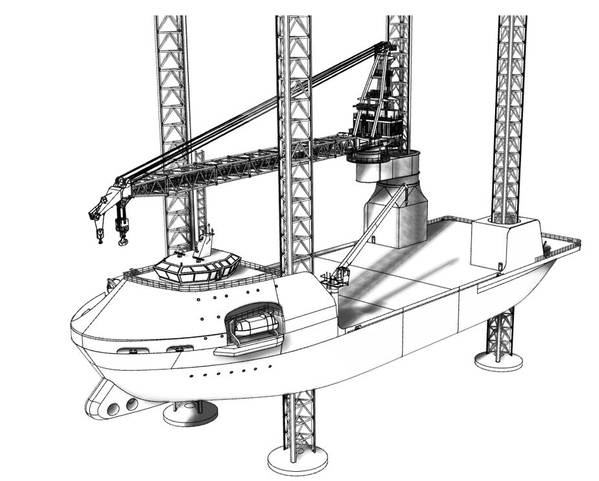
Louisiana-based company 2nd Wind Marine plans to design, finance, build and operate two Jones-Act-compliant jack-up vessels aimed at the growing U.S. offshore wind market.
The company has this week revealed the SuperFeeder design for the vessel planned to be used for transporting next-generation offshore wind turbines from the US marshaling ports out to awaiting wind turbine installation vessels.
"The MiNO Marine SuperFeeder design being built in coordination with 2nd Wind Marine is a modern, Subchapter I compliant vessel 124.5 m in length and 40m wide (overall) with a 5m hull depth. Current plans are for the simultaneous construction of two vessels," 2nd Wind Marine said in a statement.
The company said that a pair of these Jones Act-compliant vessels, designed by naval architecture firm MiNO Marine, would offer the quickest, and a proven, path to US offshore wind development.
The Jones Act, passed in 1920 to protect U.S. shipping interests, bars foreign-flagged ships from shipping merchandise between points in the United States. Under the coastwise laws, only a vessel that is built in the United States, owned by U.S. citizens, documented under U.S. registry, and crewed by U.S. seafarers may “provide any part of the transportation of merchandise by water, or by land and water, between points in the United States to which the coastwise laws apply.”
2nd Wind Marine said its two new vessels will each be capable of transporting one complete set next-generation wind turbine components from US ports to offshore windfarm sites enabling optimized construction throughput and the most efficient utilization of non-Jones Act compliant wind turbine installation vessels.
The fully DP-2 vessels will each be propelled by three 2,500kW Z-Drives and two 1,200kW tunnel bow-thrusters with the intent to maintain 10 knots while laden.
The vessels are to be primarily diesel-electric with medium speed Tier-IV engines. The house is offset asymmetrically to the port side to allow more bow deck space to accommodate tomorrow’s larger vertically stacked blade racks and will also be able to accommodate a total of 60 persons (20 crew & 40 offshore workers) in single and double berthed MLC-2006 compliant staterooms.
The cargo deck rated to transport, and jack up with, 4,000 MT has a double deck so changes in grillage can be easily facilitated without concern to vital tank and void space below and is intended to be able to carry a complete next-generation turbine set (tower, nacelle, & blades), 2nd Wind Marine said.
The vessels will be outfitted with a Liebherr designed crane installed around a jacking leg with an offset-pedestal allowing access to more than 95% of the vessel’s cargo deck space.
Per 2nd Wind Marine, the crane will be capable of lifting each component of next-generation wind turbines from quayside to the vessel’s cargo deck. Further, an extended boom variant will allow for blade change-outs in the wind turbine field.
"The MiNO Marine designed hull form was developed through extensive engineering analysis using computational fluid dynamics (CFD) methods to yield an efficient hull form suitable for a wide range of offshore operating conditions while also minimizing potential for flow induced drag. U.S. shipyards have been engaged and are currently evaluating the design and preparing construction cost and timeline estimates," 2nd Wind Marine said.
Join World Energy Report's Offshore Wind Webinar on June 17, 2020. Register here.